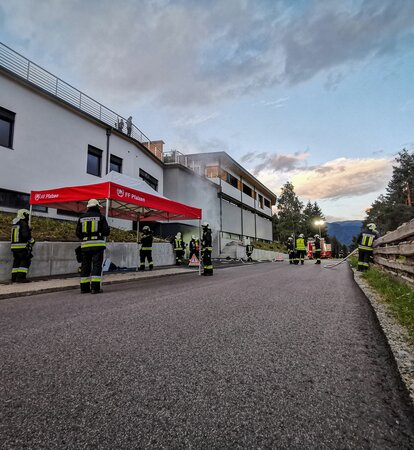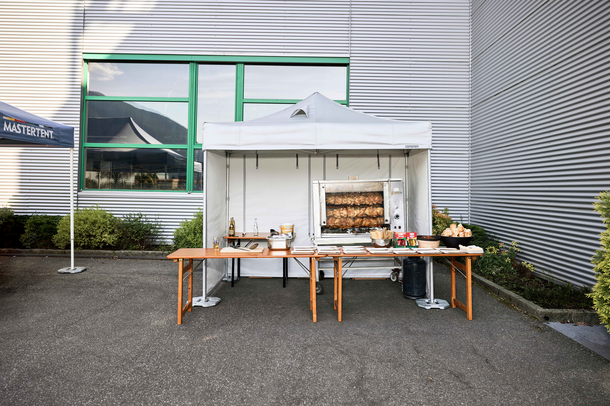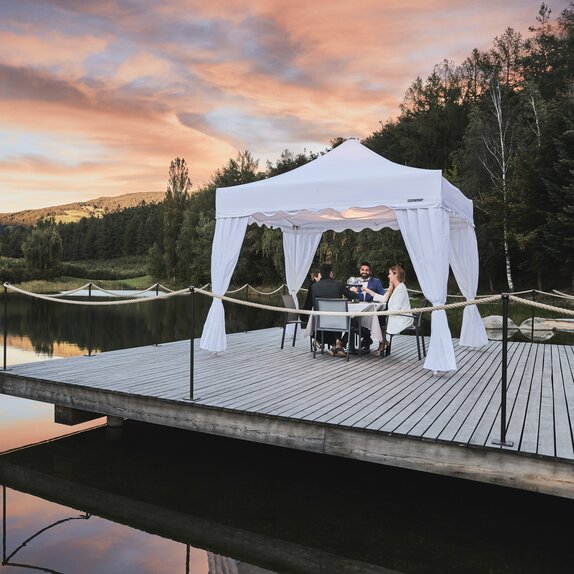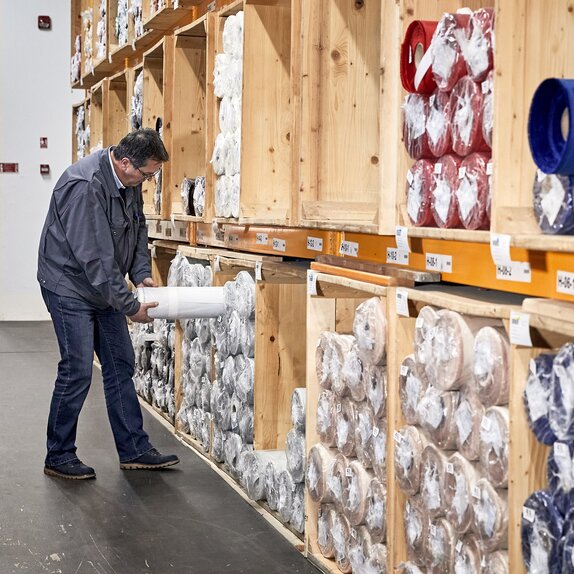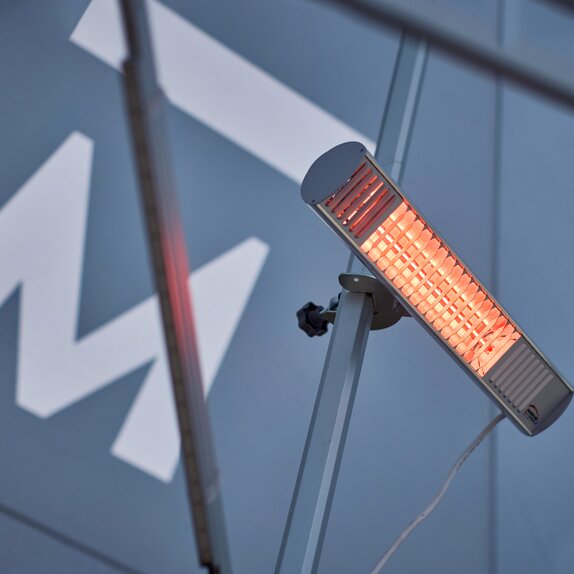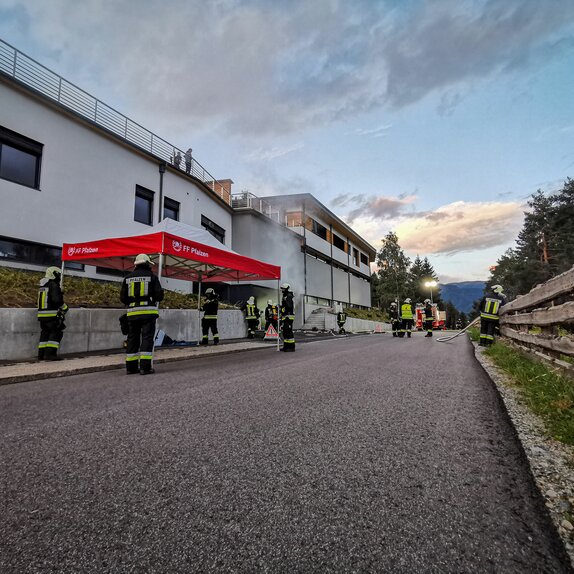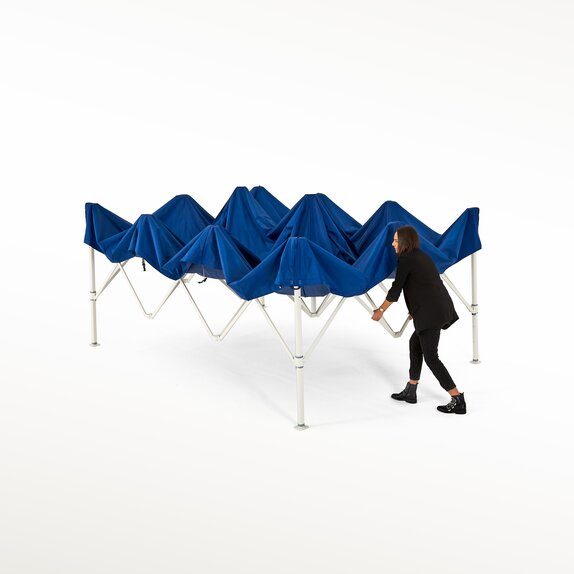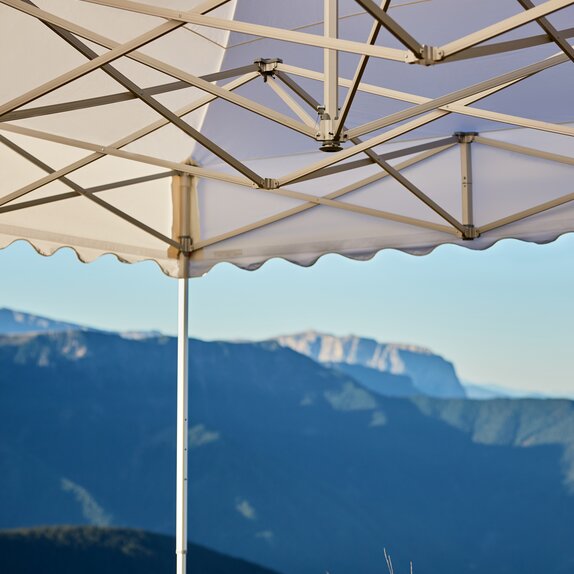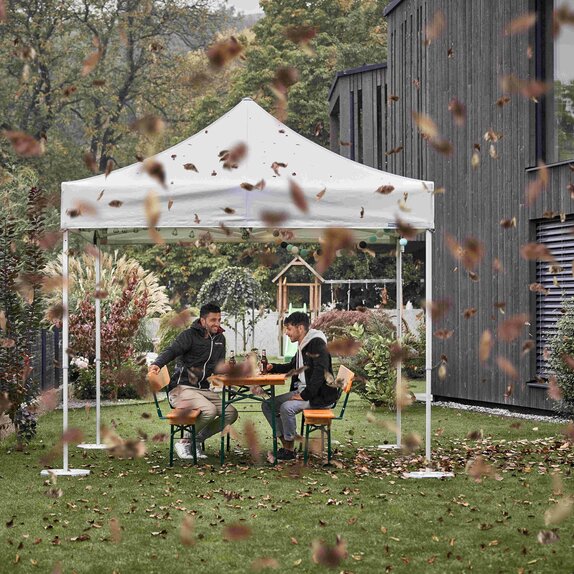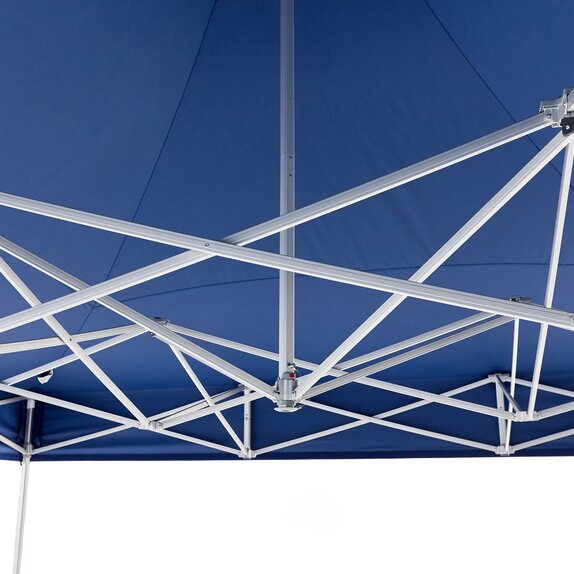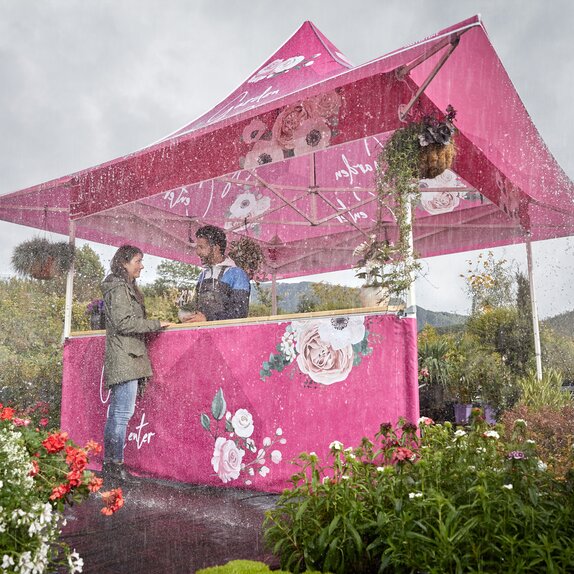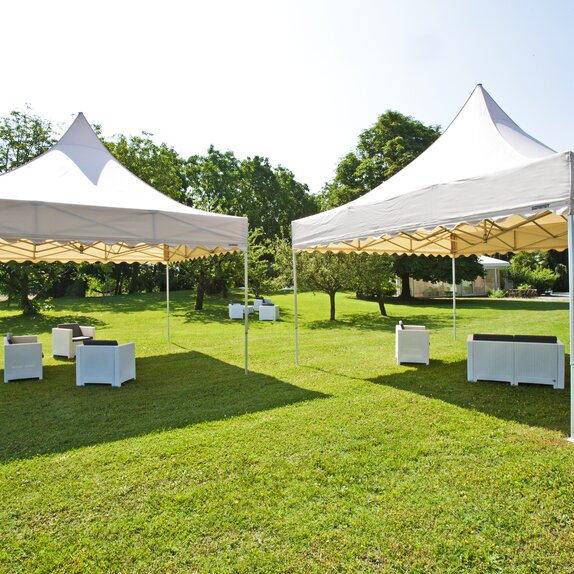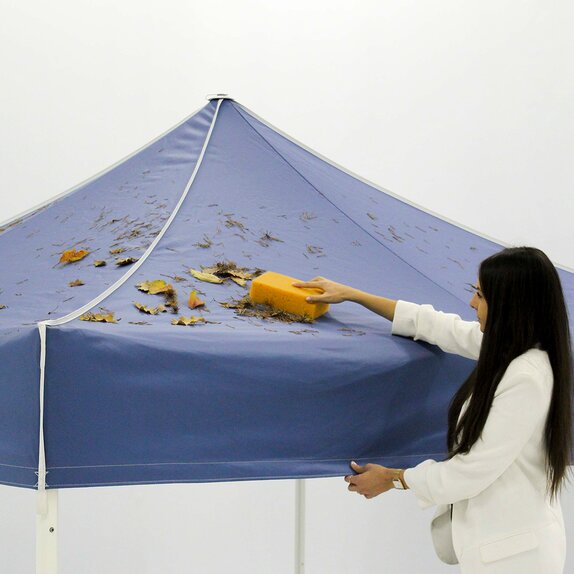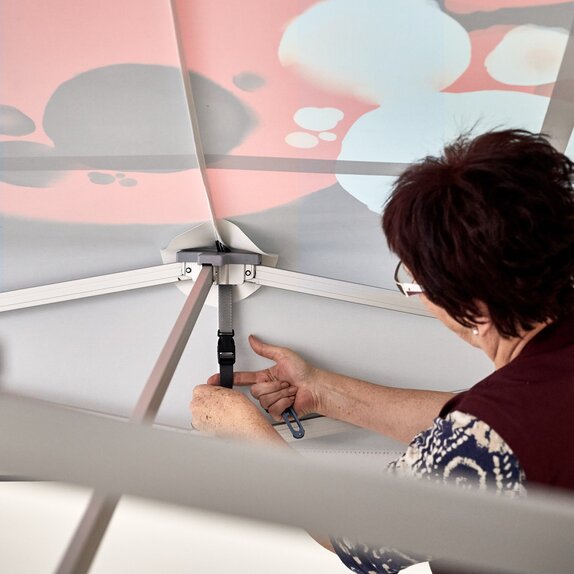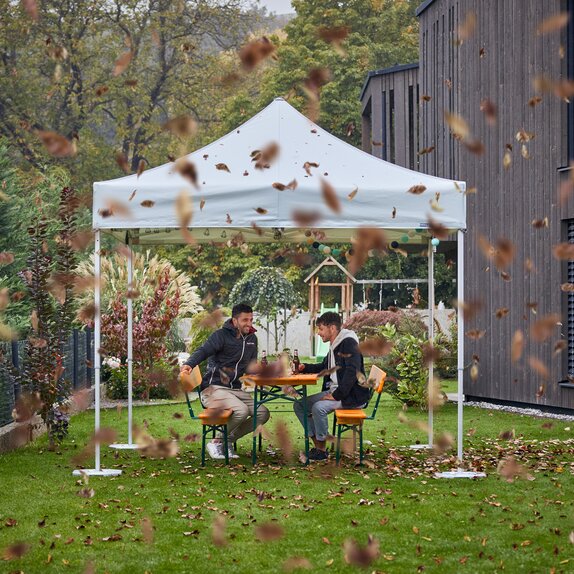Fire-Retardant Gazebos
Discover everything about our fire-retardant fabrics and which fire class our folding gazebos are assigned to.
Fire-retardant or fire-resistant? We explain the difference!
All these terms and designations for fire protections classes can be confusing. In this article we will give you an overview of relevant fire safety laws and explain what exactly it means when a folding gazebo is fire-retardant (also called flame-retardant) or fire-resistant (also called non-combustible).
We provide the answer to the following questions:

Flame-Retardant or Non-Combustible?
Flame-retardant is the term used to describe materials that can withstand fire for approximately 30 minutes, it is also referred to as fire-retardant. Components of these materials may be combustible. They include, for example, synthetic resins, wood wool, chipboard, parquet flooring and our standard textiles for folding gazebos.
Fire-resistant on the other hand, means that the materials are resistant to fire for a significantly longer period of time (90 min. and more for highly fire-resistant materials), they are also referred to as non-combustible. These materials have no combustible components. They include metallic building materials, stone, bricks, concrete, as well as the fibreglass fabric of our Kitchen Tent.
Standards for the Fire Behaviour Classification
For (building) materials, there are primarily two important guidelines that define their fire behaviour:
- the European standard DIN EN 13501-1 and
- the fire protection standard DIN 4102 that applies in Germany.
Both standards are currently valid and can be compared with each other in many respects. In fact, they both contain the designations relevant to us: non-combustible, flame-retardant, normal flammability and easily flammable.
This table shows an overview of the designations according to DIN EN 13501-1:
| Designation | Class | Additional classifications* | |
| Smoke development | Dripping behaviour | ||
| non-combustible, without combustible components | A1 | - | - |
| non-combustible, with proportions of combustible materials | A2 | s1 |
d0 |
| flame-retardant | B C |
s1, s2, s3 s1, s2, s3 s1, s2, s3 |
d0, d1, d2 d0, d1, d2 d0, d1, d2 |
| normal flammability | D E |
s1, s2, s3 - |
d0, d1, d2 d2 |
| easily flammable | F | - | - |
*Key: s1 = no/low smoke development, s2 = limited smoke development, s3 = high smoke development, d0 = no dripping, d1 = limited dripping, d2 = neither d0 nor d1
Example: If a textile is assigned to the D, s2, d1 fire protection class, it is normally flammable, some smoke develops and the burning material drips a little.
Non-Combustible Materials From Mastertent®
According to the standard DIN 4102-1, the fabric we use for our certified Kitchen Tent is assigned to the A1 fire protection class, which means that it is non-combustible. This strong fabric is made of 88 % fibreglass and is one of our latest innovations, developed primarily for the use of mobile outdoor kitchens.
The "Bergmeister - innovative & responsible engineering" company has tested and certified the properties of the Kitchen Tent and declared it suitable for use as a temporary kitchen. This means that this flame retardant fabric allows cooking, grilling, etc. under a folding gazebo, as it does not deform or burn even at very high temperatures.
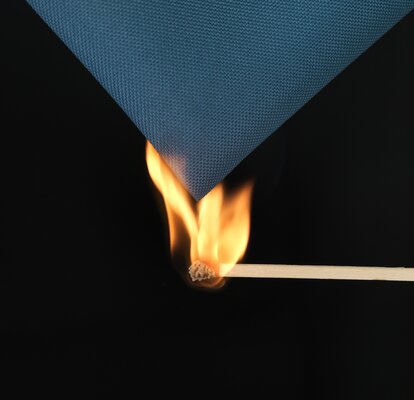
Flame-Retardant Materials From Mastertent®
All Mastertent® folding gazebos are fire-retardant. For both our Series 1 and 2 we use the high-quality polyester fabric Oxford 500D, as well as the robust and sustainable textile Pirontex® (600D). The fire behaviour of all these textiles has been tested by the Dutch "Efectis nederland BV" testing institute and classified as flame-retardant with the fire protection class B, s1, d0 according to DIN EN 13501-1.
As you can see, our folding pavilions are very safe in terms of fire resistance and many fire departments, civil defense organisations and barbecue enthusiasts already trust in the quality of Mastertent®.
How Is the Fire Resistance of a Textile Tested?
Accredited testing institutes test the fire resistance of textiles in the so-called fire shaft.
In the tests for the fire protection class B1, 1 m long samples are burned at the bottom end for 15 minutes. Subsequently, it is determined how much of the material has been burnt and how the heat and smoke have developed. The sample must not be shorter than 15 cm to meet the criteria for this fire protection class.
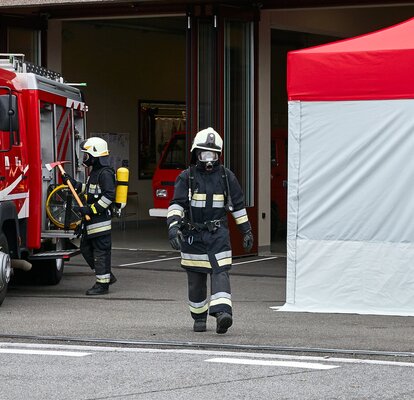
Fireproof Party Tents and Folding Gazebos for Firefighters
Whether you would like to host a party or use a folding gazebo professionally, the safety of guests and all people involved is of highest importance.
Therefore, do not hesitate and make sure that everyone finds a safe place under a reliable and high-quality folding gazebo. In this case saving money is not worth it!
